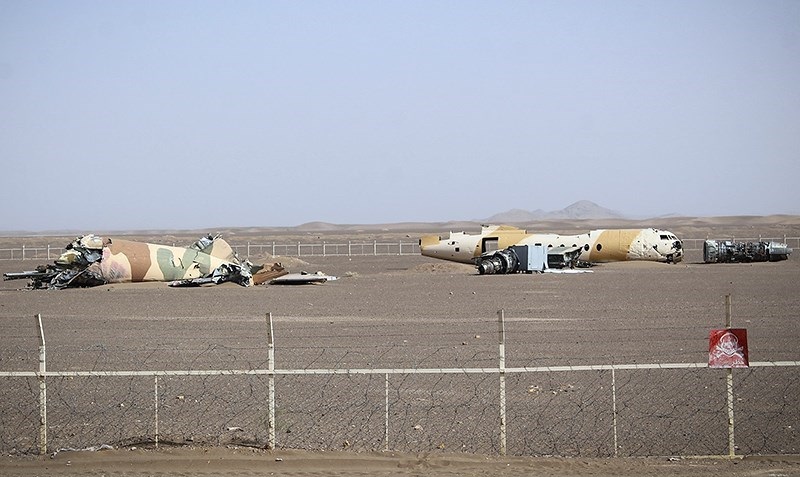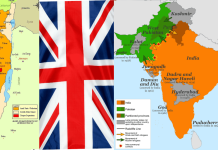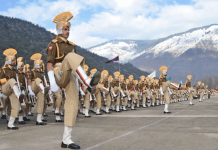The United States and the Islamic Republic of Iran remain marred in a deadlock, with tensions running high and a possible nuclear deal out of sight, at least for now.
According to an Axios report, Iranian Foreign Minister Abbas Araghchi recently asked White House envoy Steve Witkoff if the two sides could first negotiate an interim deal, as it may be impossible to reach a final deal within Trump’s timetable.
The US Secretary of State Marco Rubio says that the US does not want a war with Iran, but it is ready to do anything to stop the West Asian country from developing nuclear weapons. He added that Iran could still have a civilian nuclear program so long as it does not enrich uranium, which is a prerequisite for developing nukes.
Despite the innocuous stance taken by the US representatives, Iran remains wary.
As per satellite imagery released by the London-based Institute for Science and International Security, Iran is enclosing its major nuclear complex with a vast security perimeter around two underground tunnel networks. This may have been influenced by Trump’s previous warning that the Iranians would be bombed if they did not agree to a nuclear deal.
This prevailing mistrust and animosity between the US and Iran go back decades, when the Islamic revolution overthrew the US-backed monarch, Shah Mohammad Reza Pahlavi, and established an Islamic Republic to be ruled by Ayatollah Ruhollah Khomeini.
What followed was a 444-day-long hostage crisis and a failed US Operation Eagle Claw.
What Led To The Hostage Crisis?
The prelude to the Iran hostage crisis was the Iranian Revolution of 1979, which led to the overthrow of the US-backed Pahlavi dynasty and its head, Mohammad Reza Pahlavi, in 1979 after a year of fierce protests since January 1978.
Mohammad Reza Shah Pahlavi, the overthrown Iranian leader, had ties to several US administrations, which caused Iran’s revolutionary leaders to have intense mistrust toward the US.
The Iranians accused the US of enabling the Shah’s authoritarianism, which led to social inequalities and corruption in the Iranian administration. Additionally, Iranian revolutionaries also accused America of foreign interference in their country.
It is for this reason that the US Embassy in Tehran was the site of regular protests by Iranians against the American presence in the nation since 1978.
With his end now inevitable, the Shah left for exile in Egypt on January 16, 1979. Shortly after, Ayatollah Ruhollah Khomeini, an Islamic cleric with deep influence on the conscience of the Iranian people, returned to Iran from France after fifteen years of exile.
The Ayatollah eventually founded the theocratic Islamic Republic of Iran and became its first-ever Supreme Leader on February 11. A few months later, on October 22, the deposed Shah arrived in the United States to receive treatment for his cancer.
While the US-backed Shah was now long gone from Iran and the government had changed, the anger among the Iranians was still brewing against the United States.
The entry of Shah into New York City further fueled the already raging fire. “In the wake of a successful revolution by Islamic fundamentalists against the pro-American Shah of Iran, the United States became an object of virulent criticism and the U.S. Embassy in Tehran was a visible target,” according to the US Office of the Historian.
Less than a month after the Shah set foot in the US, a crowd of about 3,000 people, some of whom were armed, stormed the embassy on November 4 and held 66 American men and women hostage after a brief siege.
The hostages ranged from the Chargé d’Affaires to the most junior members of the staff. Following this, Iran unilaterally ended all defense treaties with both the US and the Soviet Union. Later, some people were let off, and about 52 hostages remained with Iran.

Over the next few days, the US President Jimmy Carter’s aides and other diplomats stationed in Tehran made unsuccessful attempts to liberate the hostages.
An American delegation led by Ramsey Clark, a former attorney general of the US with ties to several Iranian authorities dating back many years, was tasked with securing the hostage release. However, they were denied entry into Iran.
On November 12, the Iranian Foreign Minister Abolhassan Banisadr put forth a condition to release the hostage: the extradition of the Shah. This marked the beginning of a protracted crisis that would last for 440 days, as Carter refused to sign off on Shah’s deportation.
The Carter Administration tried every trick in the book, ranging from freezing Iranian accounts in the US to suing the country in the International Court of Justice (ICJ) to putting the country under an embargo. However, no measure was strong enough to make the Iranian administration budge.
Throughout this period, a military operation was also taking shape at the Pentagon.
In March 1980, five months after the hostages were taken, Shah returned to Egypt. And in April 1980, the Carter Administration made a last-ditch attempt and approved the launch of the military rescue mission, ‘Operation Eagle Claw.’
Operation Eagle Claw
While President Jimmy Carter’s administration was busy trying to secure the release of the embassy officials from the Iranians, American military leaders developed a potential rescue mission plan during this period.
On April 16, 1980, President Carter authorized a military rescue. All four arms of the US military were involved. The US was not in a position of advantage because it had few bases in the region that it could use.
According to the Operation Eagle Claw plan, code-named Desert One, three USAF MC-130s were tasked with transporting an 118-man assault force from Masirah Island, near Oman, in the Persian Gulf, to a remote location 200 miles southeast of Tehran, also known as Desert One. The MC-130s were accompanied by three USAF EC-130s, which served as fuel transports.

About eight RH-53D helicopters aboard the USS Nimitz carrier were to meet the MC-130s. There, the C-130s would refuel the helicopters and pick up the combat troops, transporting them to a location 65 miles outside Tehran, where the troops would hide.
The next night, the assault troops were to be picked up and driven to the embassy compound, relying on drivers, translators, and trusted agents.
As per the plan, the combat troops would then storm the embassy and gather at the embassy compound or a local soccer field with the released hostages so that the helicopter force could pick them up.
They would be secured by a group of US Army Rangers and transported to another location, approximately 35 miles south, by helicopter. The attack team and hostages would then be flown out of Iran from there.
Following this, the rangers would destroy the remaining equipment, including the helicopters, and prepare for their own departure by air.
“An extremely complex operation, Eagle Claw depended on everything going according to plan. Any deviation could cause the entire operation to unravel with possibly tragic consequences,” writes the US Air Force.
Failure Of Operation Eagle Claw
USAF combat controllers secretly moved into Iran in the weeks leading up to the mission to set up the Desert One landing spot.
The first MC-130, carrying the mission commander and USAF combat controllers, arrived at the landing location on April 24, 1980, marking the start of the mission.
As the planes landed, the combat controllers were responsible for marshalling them and setting up the airstrips. However, soon after the first MC-130 arrived, the plan began to fall apart.
Initially, a bus carrying passengers came up on a highway that divided the landing area. The advance party had to pull over and detain the forty-five people inside that bus. Shortly after, a fuel truck came down the highway.
Despite these obstacles, the assault team’s commanders decided to press ahead. Shortly after, the remaining five MC-130s arrived at Desert One and started to wait for the helicopters that had departed USS Nimitz.
However, in an unprecedented turn of events, “the aircraft encountered a haboob, a violent wind-driven sandstorm common in the desert. This resulted in severe visibility issues, damage to the aircraft, and illness among the crews. President Carter and his staff received the news and decided to abort the mission.”
The team had one less helicopter than needed to transport the attack squad and captives because the RH-53’s hydraulic issues could not be fixed. The mission was aborted, and it was decided that the assault team would be shifted back to the MC-130s while the helicopters would be refuelled and sent back to Nimitz.
This is when the inevitable disaster happened.
One of the helicopter’s rotor blades accidentally collided with an EC-130 carrying fuel. Both aircraft exploded on impact, killing five airmen on the EC-130 and three marines on the RH-53.
The mission commanders ordered the rest of the helicopters to be abandoned and everyone to board the transport aircraft, which immediately departed for Masirah Island.

The Eagle Claw went down in history as a failed mission that turned tragic for the United States. The White House announced the failed rescue the next day, on April 25.
A few months later, the Shah died in exile in Egypt. This led to a shift in Iranian administration, which changed the terms and asked for the release of all of the Shah’s assets from his American bank accounts.
Later that year, Ronald Reagan won the US Presidential election, and fresh negotiations began. The detainees were finally released on January 20, 1981, the day Reagan took the oath as President.
It is safe to say that while the hostage crisis came to an end after 444 brutal days, the relationship between the US and Iran could never go back to normal.
- Contact the author at sakshi.tiwari9555 (at) gmail.com
- Follow EurAsian Times on Google News




